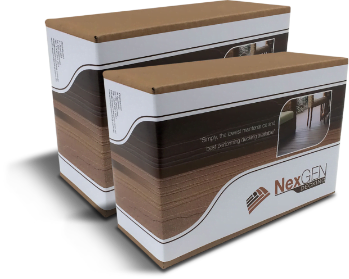Every few years, there is a major change in decking trends. From changes in technology to changes in taste, decking regularly evolves. Over the years, a handful of these decking trends have become permanently ingrained in the deck culture. Here are four decking trends that have become permanent:
- Decking Trends #1 – Multi-Level Decks: This trend began as a way to deal with steep slopes, but has grown with the increasing desire for functional outdoor living spaces. Multi-level decks make it easy for homeowners to set up the deck as if it is different rooms – one level can feature a lounging area, another can feature a bar, and another can operate as a walking area. This is perfect for an owner who wants a versatile space, but also needs to have some built-in features for year-round use.
- Decking Trends #2 – A Variety of Colours, Even on a Single Deck: In the past, the choice in decking colours was limited to natural wood and a small selection of paints and stains that could withstand the yearly abuse. Colour variety from deck to deck varied little, and multiple colours in one deck was nearly unheard of. As time and tastes have changed, and decking technology has evolved, spreading colours across a single deck has become popular – combinations of browns, contrasts of light and dark, bursts for bright colours. Even within one plank of decking multiple colours can be ingrained.
- Decking Trends #3 – Adding Curves: For years, decks were available in one shape – square. If you didn’t like straight edges and right angles, you were out of luck. Modern materials and designs have made rounded corners and circular areas commonplace, allowing decks to flow with landscaping and produce a modern feel for an outdoor space.
- Decking Trends #4 – Bigger Than Before: As with multi-level decks helping to bring home life outdoors, larger decks also increase the amount of outdoor living. A four-metre by six-metre deck with just enough room for a four-seat patio set and a barbeque doesn’t cut it anymore for many homeowners. Particularly in major cities like Sydney, Perth and Brisbane, where annual low temperatures are mild, a deck functions as an extra room throughout the year.
What has allowed these decking trends to become permanent is the move to capped composite and aluminium decking over traditional timber. The ease of maintenance of capped composite decking has allowed homeowners to pursue larger, multi-level decks, even in some of the harsher, changing climates like Queensland and Western Australia. Modern capped composite technology allows individual boards to contain different colours and grains. Capped composite materials can also be heated and bent to produce the curved railing to help make curved decks safer while maintaining the rounded look – using wood to make these railings will result in angular geometric shapes instead of smooth rounding. Finally, the price of capped composite decking has dropped to where it is only slightly more expensive per linear metre than traditional wood – that price more than pays for itself in the long run, as traditional wood will need to be replaced in 10-15 years, while capped composite decking will last a lifetime.
Contact Us
To find out more about the advantages of capped composite decking and aluminium decking, please contact us at NexGEN Decking. We can show you why capped composite decking is not just a decking trend – it’s the future of deck construction.
Products
Gallery
Contact
Direct Office Numbers
Adelaide – (08) 6316 0469
Brisbane – (07) 3041 6065
Melbourne – (03) 8672 6444
Sydney – (02) 8072 6220

